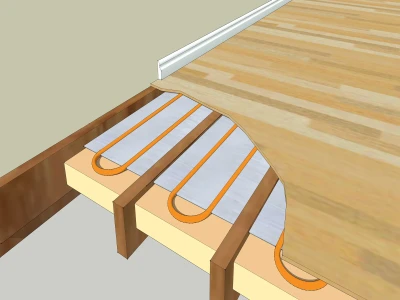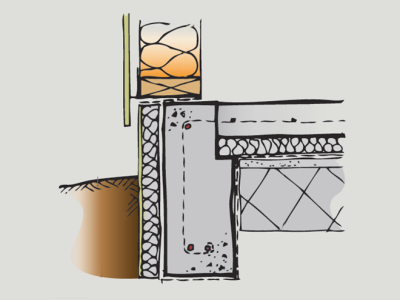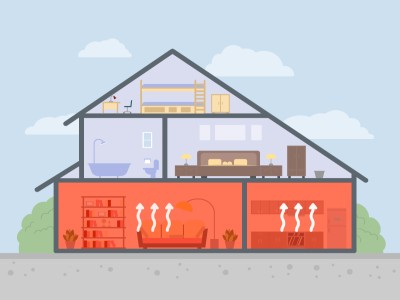Important information during the design phase
We design our systems to cope in the normal range of weather for your region and based on the information to hand at the time, but sometimes changes occur during the building process that affect the performance of the heating system. This can happen when alterations to the building elements are made either after we have designed the heating system or after the installation of the system. Should there be significant changes to the glazing or insulation specification to be installed in your project compared to that either advised or shown on the plans used for the heating design and quotation please advise our engineering team. The engineering team can then re-evaluate the design to ensure it is still appropriate to satisfy your heating requirements. Also, unforeseen behaviour, such as thermal bridging, can occur during the building process, which affects the performance of the heating system.
Getting the most out of your system
The design of the heating system is based on an international standard depending on geographical location. The “2.5%” design temperature for the clostest data point to the proposed home will be used, this data has been colated from NIWA and has been the basis for our systsem designs for many years with proven success. Under these conditions, the system is designed to achieve at least 21°C in the living areas and 17°C in bedrooms and hallways. However, if any of the design criteria are compromised, supplementary heating may be required at times. Depending on the type of system you have, the following points need consideration.
-

Running the SystemTo give good living temperatures with reasonable running costs, in slab underfloor heating requires constant running. The slab is a large mass which is easier to keep warm than to reheat each day. At the start of each season, the floor will take approximately 8 hours to heat up to its ideal temperature and consume more energy than when the floor is maintained at that temperature. Because of this, we suggest leaving the system operating on standby throughout the winter as opposed to switching it on and off – Central Heating New Zealand controls accommodate this with minimum floor temperature settings.
-

Floor Coverings
The underfloor heating system works by radiating heat from the concrete slab into the room. It’s important to consider heat emission when choosing a floor covering as they can significantly reduce the emission of heat into the rooms. Floor coverings such as thick or high specification underlays are primarily designed to insulate and should be avoided. Underfloor heating works well with all floor coverings but should be as close to the recommended industry standard of maximum R 0.15 resistance as possible. We suggest no more than 7mm standard underlay or purpose designed underlay such as Duralift 7 should be used.
-

Thermal BridgingThermal bridging is when heat is transferred through conduction to areas surrounding the slab. To help mitigate issues such as thermal bridging, we suggest insulating the perimeter of the foundation and isolating the heated slab from patios and paths with thermal breaks.
-

Insulation
Insulation under the floor slab is required to limit downward heat loss. The building code specifies a higher floor insulation requirement for heated floors and insulation on the underside and/or edge of the slab may be required to achieve this. Please contact us or you architect for more information.
-

Increased LoadHouses that are partially heated – eg: living areas only or ground floor only of a two storey house, put extra load on a heating system in terms of heat up time and running cost. Systems being used for the first time in a new or existing house also have increased loads due to moist framing timbers, painted walls etc and take time to dry out. Heat up times can be greatly extended due to these factors. Positive pressure ventilation systems are not recommended with central heating as heat is forced out of the dwelling increasing load and running costs. Balanced or true heat recovery ventilation systems are a more suitable alternative.
-

CurtainsThe use of curtains is advised for efficiency and maximum comfort as it is always colder near windows (even if they are the highest quality double glazing). This is especially true if the other factors listed above are compromised. NB: Privacy roller blinds provide little thermal insulation value.






